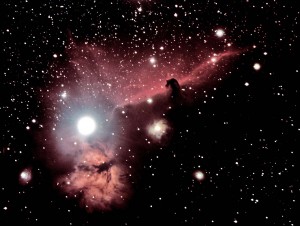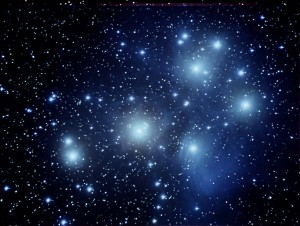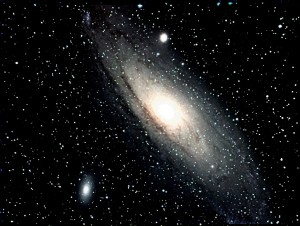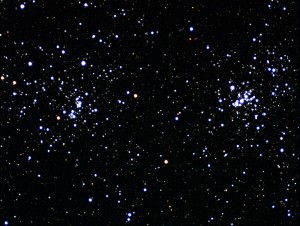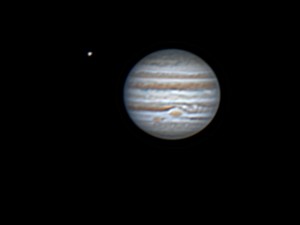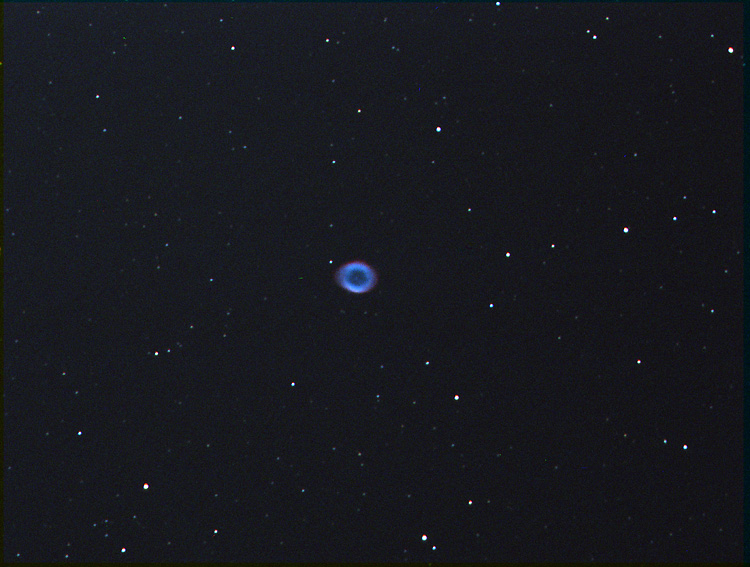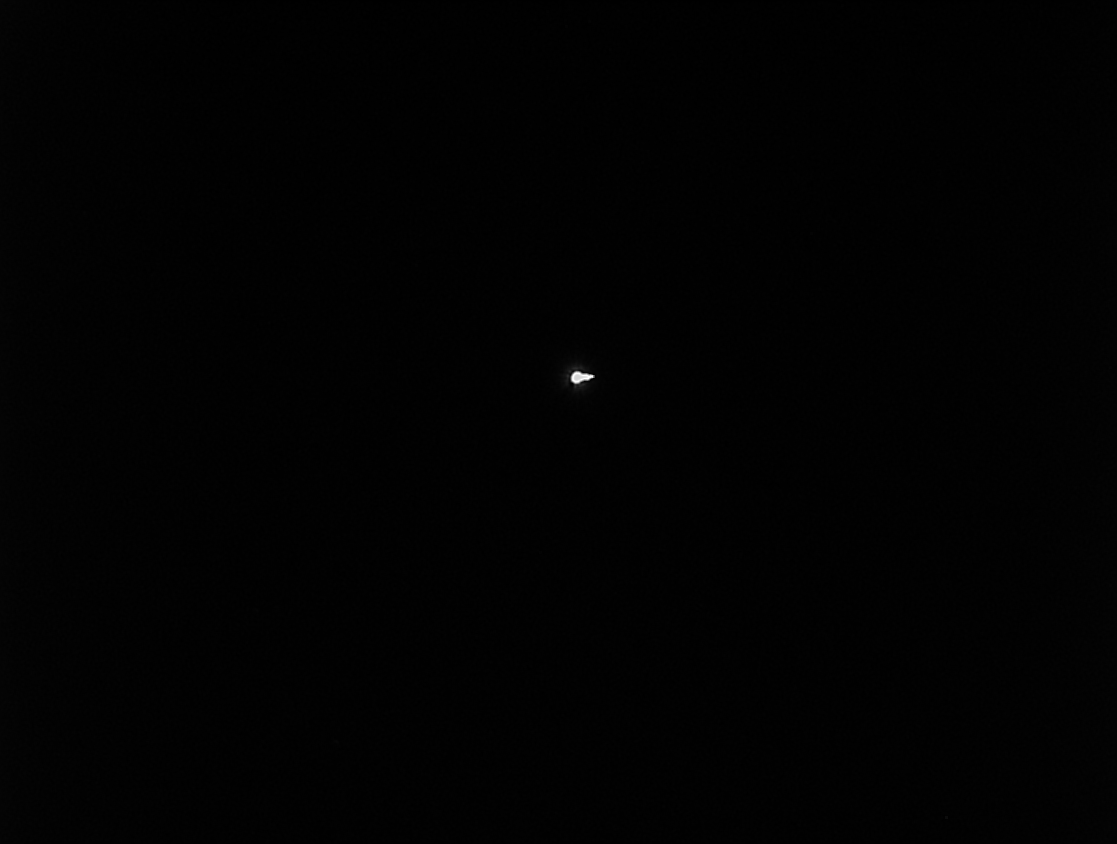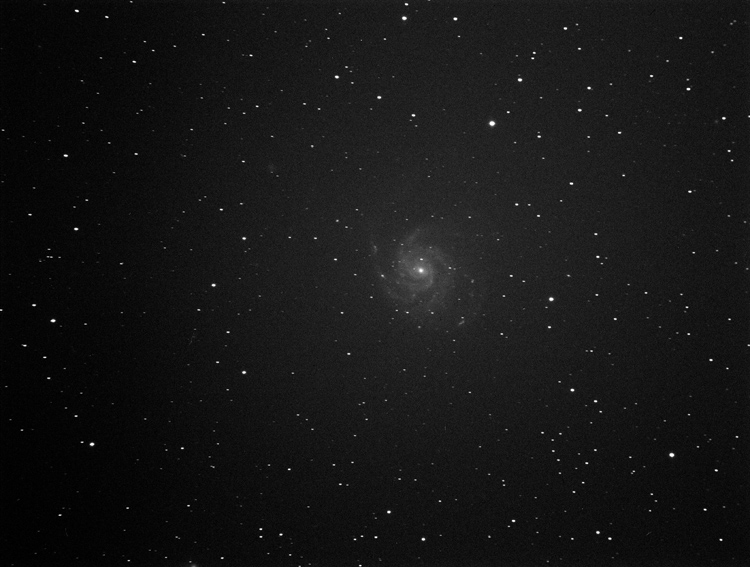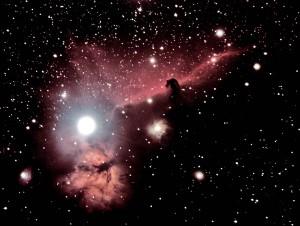 On the evening of 2 Nov 2013 or morning of 3 Nov 2013 at the Rainwater Observatory, at roughly 6:00 U.T. Observed Barnard 33 and IC434 with my 16 inch f/4.5 Meade Dobsonian Reflector, Alnitak was out of the field of view, the flame extended above the three stars that include NGC 2023 and could see the silhouette of the Horse Head above the middle star on the Flame with my Hydroden Beta Filter, the flame appeared white in the filter. I used a 26mm 2inch wide angle eyepiece which was about 70 power made by Meade that came with the telescope, that was reserved for the observation, there was no dew on the eyepiece or on the primary and secondary mirrors. Observaiton made by Doug Horacek Resident Astronomer of the Von Braun Astronomical Society of Madison Alabama.
On the evening of 2 Nov 2013 or morning of 3 Nov 2013 at the Rainwater Observatory, at roughly 6:00 U.T. Observed Barnard 33 and IC434 with my 16 inch f/4.5 Meade Dobsonian Reflector, Alnitak was out of the field of view, the flame extended above the three stars that include NGC 2023 and could see the silhouette of the Horse Head above the middle star on the Flame with my Hydroden Beta Filter, the flame appeared white in the filter. I used a 26mm 2inch wide angle eyepiece which was about 70 power made by Meade that came with the telescope, that was reserved for the observation, there was no dew on the eyepiece or on the primary and secondary mirrors. Observaiton made by Doug Horacek Resident Astronomer of the Von Braun Astronomical Society of Madison Alabama.
Picture is to show the Horse Head Nebula Section I saw.

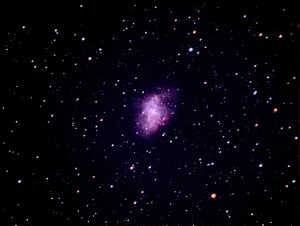
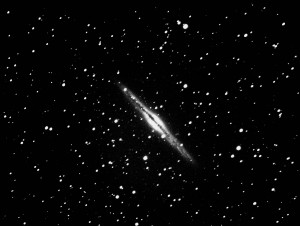 Jared Cassidy provided the 8 inch f/10 Schmidt Cassegrain and atlas mount to aide Jeff Delmas in obtaining the two color and one black and white shot, M42 and M43, the great Orion Nebula in the sword of Orion, and the Crab Nebula near the tip of one of Taurus the Bull’s Horns were captured in color, and NGC 891, the edge on galaxy in Andromeda was captured in black and white. Jeff Delmas operated the SBIG CCD camera and Frank Schenck and Jeff Delmas did the image processing with SBIG software.
Jared Cassidy provided the 8 inch f/10 Schmidt Cassegrain and atlas mount to aide Jeff Delmas in obtaining the two color and one black and white shot, M42 and M43, the great Orion Nebula in the sword of Orion, and the Crab Nebula near the tip of one of Taurus the Bull’s Horns were captured in color, and NGC 891, the edge on galaxy in Andromeda was captured in black and white. Jeff Delmas operated the SBIG CCD camera and Frank Schenck and Jeff Delmas did the image processing with SBIG software.
 Jeff Delmas images and processes Barnard 33, The Famous “Horse Head” Nebula just off of Alnitak in Orion’s Belt in color and the nebula that surrounds it IC 434 with 21 inch f/4 Newtonian Reflector and the SBIG CCD camera and processed it with SBIG software.
Jeff Delmas images and processes Barnard 33, The Famous “Horse Head” Nebula just off of Alnitak in Orion’s Belt in color and the nebula that surrounds it IC 434 with 21 inch f/4 Newtonian Reflector and the SBIG CCD camera and processed it with SBIG software.
Frank Schenck also captured this picture of Ganymede and Jupiter with the Celestron 16 inch f/11.25 Schmidt Cassegrain Reflector with his planetary video camera and processed with Registax 6.
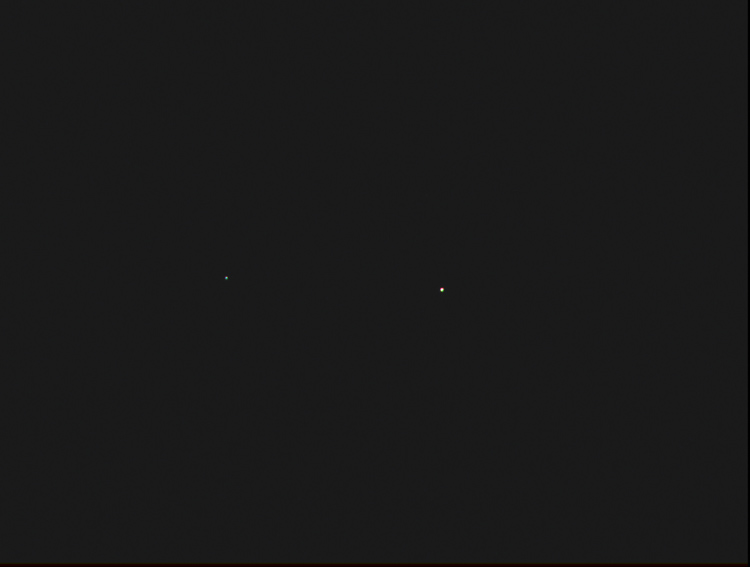
The First Color Picture is Messier 57, the Ring Nebula in Lyra, color made with the SBIG camera and SBIG RGB combine software, operated by Doug Horacek; the second photo is of Albireo the Blue and Gold Double Star at the head of Cygnus the Swan (comment, add Double Stars as a section on the BLOG), the color photograph captured by the SBIG camera and processed with SBIG RGB combine software, operated by Doug Horacek. The Black and White Antares and its White Dwarf Companion Picture was processed by Doug Horacek using Hard Planetary Smooth, Hard Planetary Sharpen, and DDP filter utilities from the SBIG software. John Callahan and Frank Schenck assited in image processing. Jeff Delmas did the photography on the evening of 6 July 2012 with the SBIG camera and Jared Cassidy’s eight inch f/10 Schmidt Cassegrain, a Meade telescope on an Orion Atlas Mount.
Here are two more images taken with John Callahan’s 4 1/2 inch refractor and our new SBIG camera, these are black and white raw images taken by Jeff Delmas. The top picture is the Veil Nebula, NGC 6960, the southwest branch and star 24 Cygnii in Cygnus the Swan or the “Northern Cross”. The Bottom Picture is Messier 101 the Pinwheel Galaxy in Ursa Major the “Big Bear” or “Big Dipper”.
Saturday evening starting after program and regular observing 10 P.M. until 2:00 A.M., 11-12 August (peak evening according to Sky & Telescope, note change of date), at the VBAS field watch the Persied Meteor Shower, the Moon will be a waning crescent, estimated between 110 and 90 meteors per hour, a great evening for observing meteors given the weather holds. Come join us for a great display of the bright Persied Meteor Shower.
Target Date: Tuesday evening, 14 August, Saturn, Mars, and Spica conjunction – call Doug Horacek at 256 772-6788 will serve pizza and root beer at Doug’s Condo. Bring binoculars and scopes with a wide field of view – will start at 6:00 P.M. to set up. Event happens at dusk and a little beyond. Alternate bad viewing dates due to weather are Monday evening 13 August, or Wednesday evening 15 August.
Target Date: Tuesday evening, 21 August, Grouping of Saturn, Mars, Spica, and the Moon at the Space and Rocket Center, event occurs at dusk and a little beyond, stay posted for more details.
Early Notice: For early risers, the Beehive Cluster (M44), Venus and the Moon will be very close together in the sky at around 4:00 A.M. on the morning of 12 September, Wednesday Morning, the only morning this happens, well worth getting up to see.
